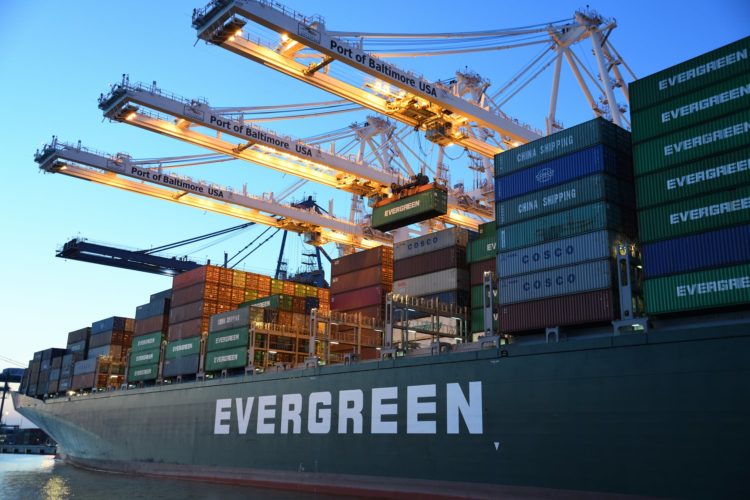When you cut open an avocado, its journey from South America to your kitchen and the multiple handlers responsible for getting it from Point A to Point B rarely comes to mind.
It is only when avocado prices spike or stock in grocery stores runs low that we realise the extent of our dependence on ports and the vessels that carry the world's cargo to operate smoothly.
In fact, this network has become an essential part of the global economy. Asia Pacific's ports play an especially significant role in the entire system of maritime trade and are contributing substantially to economic prosperity in the region.
After a reduction in global maritime shipping volumes in 2020 and the general uncertainty defining economic recovery in the short term, the international shipping industry must focus on managing risks closely as well as future-proofing supply chains and processes to operate effectively in a transformed world. This is driving innovations in port planning and operations to address shifting consumer and trade demands.
Some of the most advanced ports in the world have already begun to match the technology adoption of its partners along the supply chain. Operators at the Port of Rotterdam tested a drone in 2020 to deliver packages rather than requiring the crew to come ashore. It is just one of the uses for drones that ease traffic and transport activities and make processes more efficient.
Similarly, officials at the Port of Antwerp have developed an API platform to enable its partners to collaborate seamlessly. Although the use of advanced technologies and integrated partner activities can make international operations more efficient, it cannot be achieved unless the data generated from these activities are managed and simple to acquire for analysis.
Similar to other industries, data analytics capabilities have become prized since the pandemic began to uncover insights. Speed and agility in operations are proven benefits of harnessing the ability for ports to process cargo on more vessels and reduce delivery times as well as costs.
Digitalisation across ports in the region also increases data sharing and port integration opportunities. Achieving this operational efficiency means embracing enhanced connectivity through smart technologies and improving access to data for employees, partners and customers in all digitisation plans across the value chain.
Leading a development revolution
Asia-Pacific has set an example for the world in port development. China's One Belt One Road initiative, intended to connect 70 countries' ports and railways for more seamless transportation, is just one example of the massive investment in the region.
Singapore's Tuas Port container terminal is also expected to improve port management with smarter, environmentally conscious solutions.
Despite plans like these across the region, key challenges exacerbated by the pandemic need to be overcome across the supply chain. A lack of long-term infrastructure development across different modes of transportation as well as insufficient connectivity and standardisation across borders are vitally important areas to address.
Port facilities are also underdeveloped in many places, without enough skilled workers or technology solutions. Cybersecurity is also a concern as IT teams need to ensure that the massive amounts of data generated is processed quickly and handled in a standardised and secure manner.
To improve port productivity and overall operating efficiency at terminals, port operators and shipping and logistics enterprises need to invest in smart technologies that enable automation. This will help to solve safety, supply, and labour issues, prevent human error, and build more sustainable and resilient operations.
The role of data in smart technologies
Ports face pressure to process cargo faster in addition to competition from new facilities. As the shipping and logistics industry transforms and becomes more data-driven, ports must do the same.
This means addressing common congestion and container space issues, cyber-attack risks, and the supply chain resilience issues exposed by the pandemic.
Providing terminal managers with robotics and IoT solutions will allow them to improve processes to make ports more efficient and productive as well as manage disruption.
Smart ports in Asia-Pacific have the potential to not only redefine cross-border trade but also accelerate the seamless movement of products and, potentially, create a truly collaborative environment.
For example, when global maritime logistics business CyberLogitec automated its shipping terminal operations using data analytics, it gained more insight into the real-time location of equipment, and can now leverage the data collected from IoT devices.
Global shipment management solutions provider CargoSmart also used data analytics to achieve unprecedented visibility into their business to improve decision-making in real-time and better serve customers.
To be truly effective, ports and their partner networks must do more than adopt these technologies alone. They must embrace platforms and solutions that make it easier for stakeholders to enhance the overall port ecosystem.
Port operators who don’t move forward risk being overtaken by competitors that make the most of smart port technologies. In a short time, it will help bring avocados, electronics, medical supplies, and other products we need and love from other parts of the world to us faster and more reliably than we ever envisioned.





